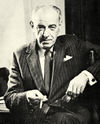The High Wire: Difference between revisions
imported>Hayford Peirce (→Reception and/or Appraisal: NYT reference) |
imported>Hayford Peirce (→Reception and/or Appraisal: now to type in some of the review, can't do a copy and paste, groan) |
||
| Line 14: | Line 14: | ||
<blockquote>''The New York Times'': xxxxxx <ref>Anthony Boucher, ''Criminals at Large'', ''The New York Times'', August 11, 1963 at [https://timesmachine.nytimes.com/timesmachine/1963/08/11/89952598.html?pageNumber=345]</ref></blockquote> | <blockquote>''The New York Times'': xxxxxx <ref>Anthony Boucher, ''Criminals at Large'', ''The New York Times'', August 11, 1963 at [https://timesmachine.nytimes.com/timesmachine/1963/08/11/89952598.html?pageNumber=345]</ref></blockquote> | ||
==References== | ==References== | ||
<references/> | <references/> | ||
Revision as of 17:05, 12 October 2020
Authors [about]:
join in to develop this article! |
The High Wire is a 1963 suspense novel by the British author William Haggard published in England by Cassell and in the United States by Ives Washburn. It was Haggard's fifth of 21 books involving his protagonist Colonel Charles Russell, the head of the unobtrusive but lethal Security Executive, a government counter-intelligence agency clearly based on the actual MI5 or Security Service, where he moves easily and gracefully along C.P. Snow's Corridors of Power in Whitehall. It has noticeably less detailed examinations of character and motivation than Haggard's four earlier books and considerably more elements of standard suspense thrillers, particularly regarding action and gun-play. Haggard had achieved a certain critical reputation by 1963, and High Wire only added to it: the Crime Writers' Association of the United Kingdom gave it runner-up status for that year's Gold Dagger, their annual award for the best crime novel of the year. Gun Before Butter by Nicolas Freeling was the other runner-up, while the Gold Dagger itself went to one of the most famous thrillers ever written, The Spy Who Came in from the Cold by John le Carré. The book is also notable for its sardonically sharp depiction of the leader of an unnamed country across the English Channel, a tall, grandiose, and mystique-driven Marshall who clearly evokes Charles de Gaulle.
Plot
Protagonist is perhaps too strong a word to describe Colonel Russell. As Haggard himself wrote about his fiction:
My novels are chiefly novels of suspense with a background of international politics. A Colonel Charles Russell of the Security Executive, a not entirely imaginary British counter-espionage organization, while not a protagonist in the technical sense, holds the story line together in the background by his operations, while the characters in the foreground carry the action."[1]
Reception and/or Appraisal
The New York Times review was highly favorable:
The New York Times: xxxxxx [2]
